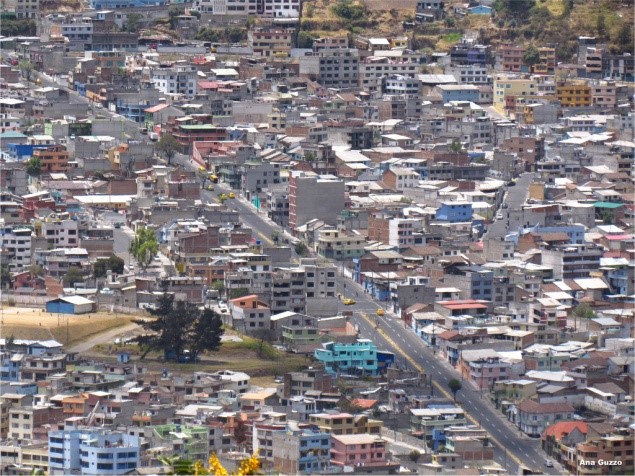
Photo: new-urban
The New Urban Agenda: What now?
06 February 2017
by Folkert Leffring
The New Urban Agenda was formally adopted by national governments during Habitat III, on 20 October 2016, in Quito, Ecuador. The agreement provides the roadmap for sustainable urban development in our cities over the next 20 years. So what is in the agreement and what happens next?
By Alice Charles, Lead, Urban Development Global Leadership Fellow, World Economic Forum*
What is in the New Urban Agenda?
The New Urban Agenda takes into account the synergies that exists with other global agreements namely the Sustainable Development Goals (SDGs), the global climate agreement reached at COP21 in Paris, Addis Ababa Action Agenda, Sendai Framework for Disaster Risk Reduction 2015-2030, the Vienna Programme of Action for Landlocked Developing Countries, SAMOA and the Istanbul Programme of Action for the Least Developed Countries to provide a holistic transformation approach for addressing urbanisation.
The key components of the New Urban Agenda that will provide strategic direction for the successful transformation of our cities are:
Urban policies: Developing and implementing urban policies that promote cooperation among local and national government and builds multi-stakeholder partnerships to enable them to achieve sustainable integrated urban development.
Urban governance, rules and regulations to enhance municipal finance: The outcomes in terms of quality of urban settlement depend on the set of rules and regulations that are framed and made effective. Strengthening urban governance and legislation will provide direction to urban development and the necessary stimulus to municipal finance.
Urban planning and design: Strengthen urban and territorial planning to best utilise the spatial dimension of the urban form and deliver the urban advantage.
What happens next?
While Habitat III reinvigorated the global dialogue on sustainable urban development, the New Urban Agenda is non-binding and merely provides guidance. If significant progress is to be made post Quito, public-private cooperation needs to be employed to implement and address the key priorities set out in the New Urban Agenda. This can only be achieved through dialogue and cooperation between multi-stakeholders including business, government and civil society.
Governments must recognise the role of the private sector in the delivery of urban infrastructure and services and that the private sector contribution is increasingly required for all aspects of the urban value chain. This includes policy-making, planning, design, implementation, operation and maintenance, and monitoring, as well as the financing and delivery of urban services.
National and city government must create a conducive enabling environment for public private cooperation, with well-defined urban polices that promote multi stakeholder collaboration; urban governance and rules that provide political commitment and protects long-term investments, and strengthen urban planning and design. National governments also need to find the political will to empower cities, to enable them to build their capacity, resources and raise revenue to deliver sustainable urban development in their cities.
The private sectors contribution is increasingly required for all aspects of the urban value chain and they must come forth and support the efforts of the public sector to address the immediate and long-term challenges associated with urbanisation and enable the delivery of sustainable human-centric solutions. The private sector must constantly engage with civil society and the community throughout the project cycle to improve the quality of urban infrastructure and services that are planned and delivered.
Public-private cooperation will enable the delivery of sustainable and affordable urban development, housing solutions and drive economic growth. It is important that the public and private sector, working with civil society, play their part to deliver the objectives of the New Urban Agenda and prioritise their actions based on a city’s unique context and immediate and long-term priorities to achieve sustainable urban development.
*This is an edited article that was first published on the World Economic Forum Agenda website. Click here to read the full version.








